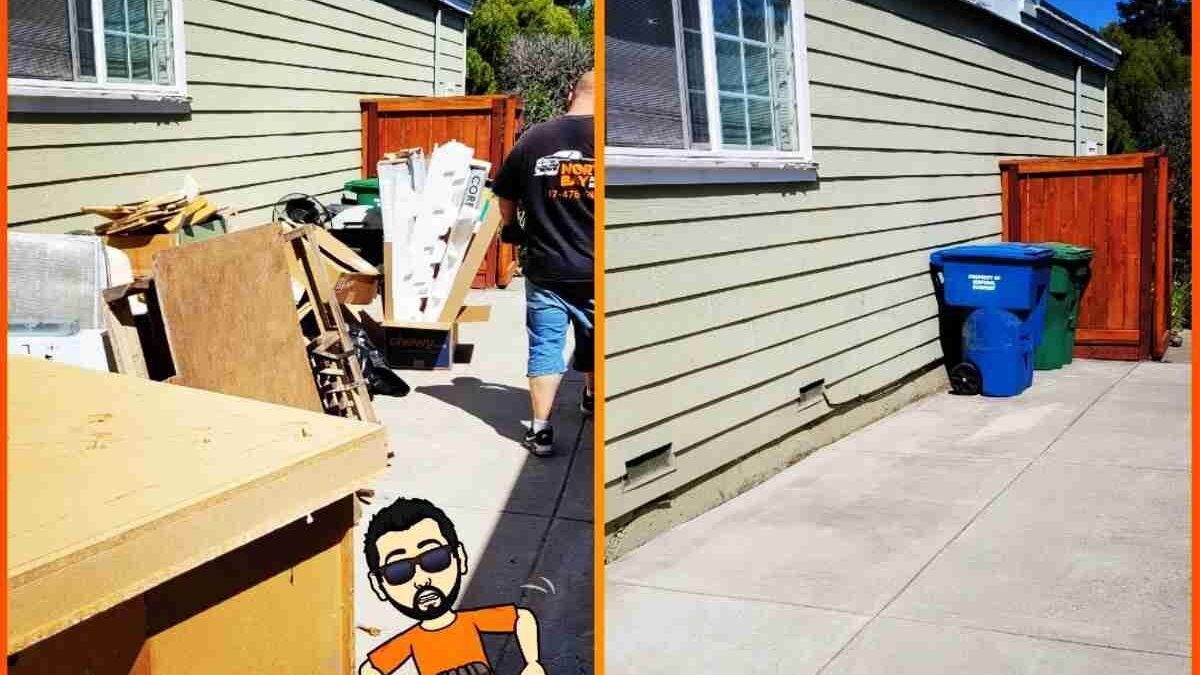Why Hire a Professional for Attic Cleanouts
August 7, 2025
Understanding the Process of Junk Removal for Residential Properties
August 7, 2025How to Prepare for a Foreclosure Cleanout
Understanding the Scope of a Foreclosure Cleanout
Foreclosure cleanouts can feel overwhelming at first glance, especially when a property has been left in disarray. The process often involves clearing out everything from old furniture and appliances to accumulated personal belongings and trash. Taking a moment to assess the property before jumping in can save time and prevent unnecessary stress. Walking through each room, noting areas that need special attention, and identifying items that may require extra care or disposal will give you a clearer plan of action. This preparatory step helps create an organized approach to tackling the property efficiently.
Being mindful of potential safety hazards is also crucial. Broken glass, sharp objects, mold, and other hidden dangers can make a cleanout challenging. Wearing protective gear such as gloves, masks, and sturdy footwear, and having basic first aid supplies nearby, ensures safety while working. Additionally, separating items into categories for donation, recycling, or disposal will streamline the removal process. This foresight minimizes repeated trips and confusion while making the property ready for professional cleanup if necessary.
Creating a Strategic Plan for Removal
A successful foreclosure cleanout begins with a strategic plan that outlines what needs to be removed, where items will go, and how to manage the logistics. Start by prioritizing larger and more cumbersome items that could block access to other areas. Scheduling the removal process in phases allows for a steady and manageable workflow. Knowing which disposal facilities or recycling centers are available and understanding their requirements ensures a smooth transition of items from the property.
It is also wise to consider the manpower and equipment needed for the task. Enlisting help from friends, family, or professional junk removal services can make the process faster and less physically taxing. Having the proper tools, such as dollies, carts, and heavy-duty bags, will further reduce strain and prevent injuries. Preparing a timeline and sticking to it provides structure, helping to avoid the chaos that can often accompany large cleanouts.

Sorting Items for Disposal and Recycling
Sorting items systematically is essential during a foreclosure cleanout to optimize efficiency. Begin by distinguishing between salvageable items, recyclable materials, and waste. Furniture, appliances, and electronics may still hold value and can be sold, donated, or recycled. Hazardous materials such as paint, chemicals, or batteries should be handled according to local regulations to prevent environmental harm. By clearly labeling and grouping items, you can create a smoother workflow and reduce the risk of mixing items that require different disposal methods.
In addition to physical sorting, digital records of items can be helpful. Taking photos or maintaining a checklist ensures accountability and can assist in inventory management if items need to be reported or documented. Planning for the pickup and transportation of these sorted items in advance avoids last-minute confusion. By investing time into careful sorting, you not only make the property more presentable but also contribute to environmentally responsible disposal practices.
Clearing Hazardous and Unwanted Materials
Foreclosure properties often contain hazardous or unwanted materials that need careful handling. Mold, broken glass, rusted metals, and chemical residues can pose serious health risks. Identifying these hazards early and taking steps to mitigate them is essential for safety. Protective clothing, masks, and proper tools should be standard equipment during this stage. Safe disposal practices also prevent accidents and ensure compliance with local regulations, reducing potential liability.
Proper disposal includes arranging transportation to facilities equipped to handle hazardous waste. It is essential to understand what can be disposed of through standard waste channels and what requires specialized handling. Having this knowledge ahead of time allows for an efficient and legally compliant cleanout. By prioritizing safety and responsible disposal, the process becomes more manageable and significantly reduces the risk of injury or contamination.
Coordinating Professional Help When Needed
While some foreclosure cleanouts can be managed independently, enlisting professional help can save time and effort. Junk removal services bring experience, equipment, and manpower that make tackling large or challenging properties more feasible. Professionals can handle heavy lifting, proper sorting, and safe disposal of materials, allowing homeowners or property managers to focus on other aspects of property transition.
Selecting a reputable service involves checking credentials, insurance, and customer reviews to ensure reliability. Communicating expectations clearly and discussing any unique requirements before the job begins helps prevent misunderstandings. Coordinating schedules with professionals ensures a seamless process, reducing the duration of the cleanout and leaving the property ready for sale or renovation. Bringing in experts can transform a daunting task into a smooth, organized operation.
Managing Time and Scheduling Efficiently
Time management is a key component of foreclosure cleanouts. Establishing a realistic schedule for each stage of the cleanout prevents fatigue and maintains productivity. Breaks, staggered tasks, and assigning responsibilities can help manage physical demands and reduce stress. Planning the process around daylight hours or favorable weather can also improve efficiency, especially when removing heavy items outdoors.
Efficient scheduling also includes coordinating with waste facilities, donation centers, and professional services. Knowing their operating hours and requirements ahead of time ensures that items are disposed of or recycled without delay. By breaking the cleanout into manageable chunks and adhering to a structured timeline, the process becomes less overwhelming and more predictable, leaving space for unforeseen challenges without derailing the overall plan.
Organizing Tools and Supplies
Having the right tools and supplies on hand is essential for a smooth cleanout. Items such as gloves, masks, heavy-duty bags, moving blankets, carts, and dollies help streamline the removal process and prevent injuries. Being prepared with cleaning supplies, such as disinfectants and brooms, allows for a more thorough property cleanup once large items are removed. Organizing these tools in advance saves valuable time and reduces the risk of having to interrupt the cleanout to find or replace equipment.
Proper organization also involves designating spaces for sorted items. Clear bins or marked areas for donations, recycling, and trash make the removal process more systematic. Preparing transport solutions, whether using rental trucks or coordinating with professional services, ensures that items can be moved efficiently. A well-prepared setup promotes a structured workflow and significantly reduces stress throughout the project.
Handling Personal Belongings Thoughtfully
Personal belongings in foreclosure properties can range from everyday items to sentimental possessions. Thoughtful handling is necessary to respect former occupants and avoid unnecessary damage. Packaging fragile or valuable items carefully and documenting their condition is advisable. Items with potential resale or donation value should be separated from waste, ensuring that nothing of use is discarded unnecessarily.
Additionally, managing personal belongings includes understanding any legal or ethical considerations related to property left behind. Clear communication with property owners or legal representatives can guide decisions about keeping, donating, or discarding items. Handling these possessions with care not only ensures compliance but also promotes an organized, efficient cleanout process that protects the property and respects previous occupants.
Ensuring Compliance with Local Regulations
Foreclosure cleanouts must adhere to local regulations regarding waste disposal, recycling, and hazardous materials. Understanding these rules ahead of time prevents fines and ensures that the property is cleared safely and legally. Researching local ordinances and contacting disposal facilities for guidance allows for a compliant process from start to finish.
Maintaining proper documentation of discarded or donated items can also be important, especially if the property is under legal oversight. Knowing what can and cannot be removed, and following official protocols, ensures the cleanout is conducted responsibly. Compliance with local laws protects both property managers and cleanout teams from potential liability, providing peace of mind during a complex task.
Keeping the Process Stress-Free
Foreclosure cleanouts can be emotionally and physically taxing, but thoughtful preparation helps reduce stress. Breaking down the project into achievable steps, setting realistic expectations, and enlisting help as needed makes the process manageable. Maintaining open communication among team members or professionals involved ensures clarity and efficiency.
Incorporating rest periods and staying mindful of physical limits prevents burnout. A positive, structured approach to the cleanout fosters a sense of accomplishment as each stage is completed. Prioritizing safety, organization, and realistic goals allows the cleanout to progress smoothly, leaving the property ready for its next chapter without unnecessary strain.
Conclusion
Preparing for a foreclosure cleanout involves careful planning, safety precautions, and efficient organization. From sorting personal belongings to managing hazardous materials, taking a strategic approach ensures the property is cleared responsibly. Professional assistance can further streamline the process, providing expertise and equipment that make heavy lifting and disposal more manageable. Timing, scheduling, and compliance with local regulations contribute to a smooth operation, reducing stress for those managing the property transition.
For those in the Santa Rosa area needing reliable junk removal services, North Bay Junk Removal offers professional, comprehensive solutions. Their team is equipped to handle all aspects of a foreclosure cleanout, ensuring the property is left clean and organized. Residents can contact North Bay Junk Removal at 707-478-6817 for expert assistance, making the process faster, safer, and more efficient.




